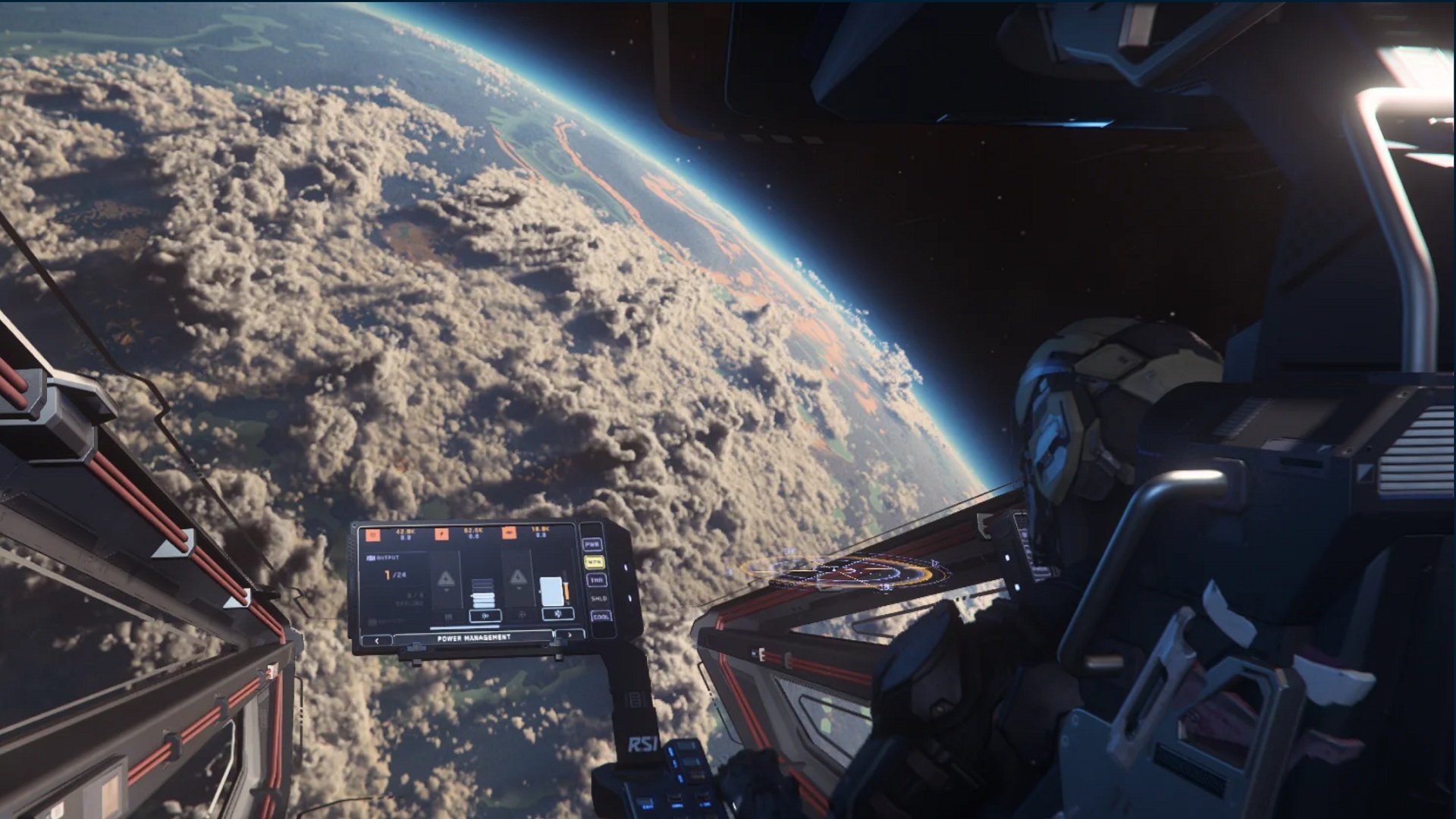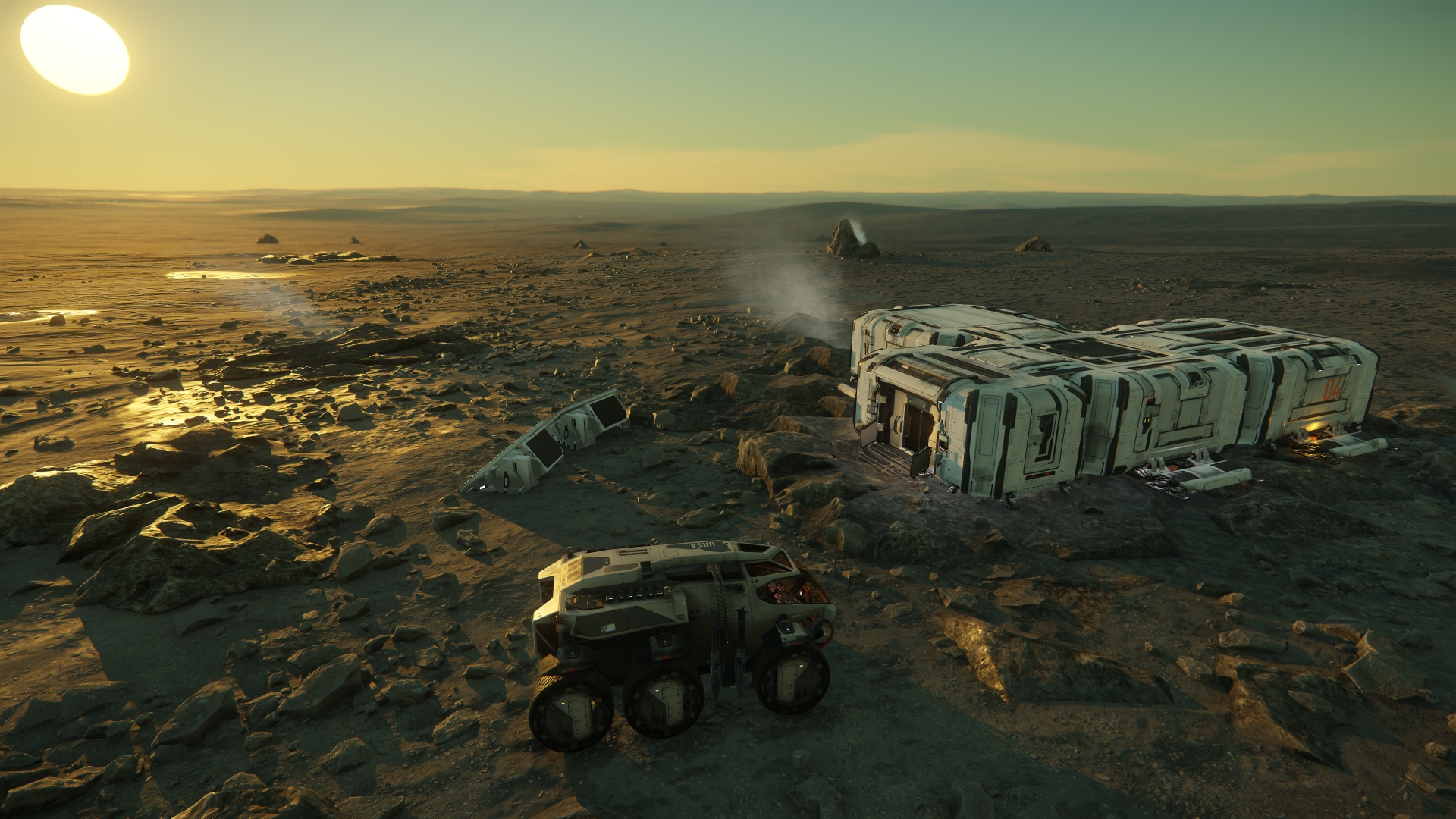$800 million, 13 years, and still no release date — the state of Star Citizen in 2025
As Star Citizen approaches a billion dollars in funding and with no full release date in sight, we take a look at its history and the current state of this ambitious space epic.

After 13 years and a stunning $800 million in backers' funds, Star Citizen, the most ambitious space sim of all time, continues to languish in early access.
The brainchild of Chris Roberts — best known as the creator of the seminal Wing Commander series — Star Citizen was created to expand on ideas that didn't find their way into Freelancer, another project Roberts was working on before the developer was acquired by Microsoft, and he departed. Released in 2003, Freelancer focused on an open space sandbox that allowed players to carve out a living trading, mining, or hunting bounties across 48 star systems. While it was released as a single-player game, Roberts originally planned to follow it up with a more ambitious online version.
"My original vision for Freelancer was to first release a single player game and then follow it up with a massively multiplayer version with a dynamic economy and a world that reacted and adapted to the player's actions," Roberts said in a blog post. "I didn't get a chance to deliver this vision and ultimately while Freelancer was a good game, it fell short of what I was aiming for."
Almost a decade later, Star Citizen became the vehicle for Roberts to execute on his original vision for Freelancer. In the intervening thirteen years, the game has been plagued by periods of radio silence from the developers, cut features, and broken promises, while also delivering a string of ambitious updates and universe-expanding (if sometimes half-baked) new content. If Star Citizen ever delivers on its promise, it will undoubtedly be one of the best space games of all time… but can it ever fulfill its lofty ambitions?
A tumultuous history
After a successful Kickstarter campaign in 2012 that raised over $2.1 million, developer Cloud Imperium Games (CIG) started releasing Star Citizen modules to give players a taste of the gameplay and features. The first of these was the hanger module, which allowed players to walk around outside the ships they'd earned by pledging to the Kickstarter. CIG announced they planned to launch a feature-complete version of the game in November of 2014 (spoiler alert: they did not).
2014 did see the release of the Arena Commander mode, which gave players their first real taste of sitting behind the sticks of Star Citizen's ever-growing roster of ships. The module allowed backers to scoot around in races or take on other players or AI ships in combat, and offered a limited handful of game modes to whet players' palates.

The following year, CIG dropped the first iteration of the Persistent Universe module, which combined previous updates and became the core of the early access release. It modeled part of one of the game's megacities and gave players an idea of what the final version of the game may look like. Eventually, it would expand to blend in-ship and on-foot experiences and allow for expanded interactions between players. The Persistent Universe became the focus of development and was the bedrock of the game's evolution.
Get the Space.com Newsletter
Breaking space news, the latest updates on rocket launches, skywatching events and more!
At the same time, CIG announced they'd contracted a third-party studio, Illfonic, to build a first-person shooter module that would eventually blend seamlessly with Star Citizen's core gameplay. Called Star Marine, the project was plagued by development issues and delays, and eventually, the contract with Illfonic was cancelled, and development was moved in-house. Originally planned as a 2015 release, Star Marine didn't see the light of day until December of the following year, and launched without many of the originally promised features.
Updates followed at a staccato pace. 2017 saw the addition of explorable planetary surfaces for the first time, with character customization, mining, and the first fully modeled planet and city the next year. Subsequent versions have added additional planets, a reputation system, loot, and a host of other systems and features. But throughout its development, the game has been haunted by the looming spectre of Squadron 42, a single-player component originally pitched as a tutorial that has spiraled into the realm of feature bloat.
The Squadron 42 quagmire

The initial concept behind Squadron 42 was a tutorial segment that would gently introduce players to the game's mechanics and feed them some in-game rewards upon completion. It has since morphed into a full-blown, standalone game set in the Star Citizen universe, promising a complete single-player campaign complete with a cast of high-profile actors, including Gary Oldman, Henry Cavill, Gillian Anderson, and many others. Like the main game, Squadron 42 promises to blend in-ship exploration and combat with FPS and other elements.
Squadron 42 was originally slated for 2014, then bumped to 2016, before being delayed indefinitely. Development is being handled by a studio called Foundry 42 under the supervision of Chris Roberts' brother, Erin, and details have continued to drip out in the intervening years. The team has released a number of teaser videos, as well as a one-hour "vertical slice" of the game from 2017 that showed off some exploration, FPS gunplay, and an extravehicular activity (EVA) sequence where the player examines the wreck of a spaceship.

In 2020, CIG launched a series on its YouTube page called "The Briefing Room" which was set to explore various aspects of Squadron 42. It was discontinued after airing a single episode.
The same year, while revealing a progress tracker and roadmap for both the main game and Squadron 42, Chris Roberts said "Squadron 42 will be done when it is done, and will not be released just to make a date, but instead only when all the technology and content is finished, the game is polished, and it plays great. I am not willing to compromise the development of a game I believe in with all my heart and soul."
At CitizenCon 2023, the annual Star Citizen fan convention, CIG announced that Squadron 42 was feature complete. While a number of fans and media outlets assumed this meant that release was imminent, a full year later (at CitizenCon 2024), the company announced that Squadron 42 wouldn't release until some time in 2026.
The state of Star Citizen in 2025
Remarkably, Star Citizen manages to feel exactly like what it is: a game that's been in development for 13 years and a game that's still in alpha.
It's incredibly ambitious and in many ways, a remarkable feat. The depth of some of its systems is stunning; for example, if your character is wounded during combat, you may become injured and require medical attention. Instead of a single health bar, each of your body parts has its own pool of hit points. Injuries to your legs may cause you to limp. Arm injuries may decrease melee damage or increase weapon sway. To heal injuries, your character will need to spend time in an appropriately equipped facility like a hospital, and there's a full medical career available for players who want to chase their Grey's Anatomy dreams in space.

This is just one example of the huge gameplay variety on offer in the current version of Star Citizen. The legacy of Freelancer's systems is most evident in the career paths available. Players can choose to be miners and extract valuable materials from asteroids in space, planetside in specially-designed mining vehicles, or on foot with a handheld mining laser.
Or you may decide to live the life of a trader, delivering commodities where they're most needed (or desired), or an outlaw, haunting the fringes of society. You can also combine career paths by, for instance, mining resources and then selling them along a profitable trade route, or making your mark trading contraband.
There's also bounty hunting, salvage, racing, and a number of other careers, most of which are buoyed by supporting missions and systems that make them fully viable for tens of hours of gameplay. The first-person gameplay has also made several leaps both in sophistication and polish, and improvements to gunplay, loot, and physics have made it nearly as compelling as the space elements. A host of ground vehicles is also available, ranging from gravbikes and hovercycles to powered exosuits that look like construction mechs.

With all that said, the game's pre-release state is also very evident at times. Bugs are ubiquitous and range from amusing to annoying to downright game-breaking. Players regularly encounter log-in issues, infinite loads, and inventory issues. Unsurprisingly, for a game that's replete with a sprawling number of systems and objects constantly interacting with each other, there are numerous issues, and patches often introduce as many problems as they correct, especially when new features are introduced.
There have also been a number of troubling reports about the state of the game's development and the health of its developer, Cloud Imperium Games. An Insider Gaming report from October of last year revealed a studio in crisis: pushing its staff to crunch, laying off more than 100 of its employees, and freezing wage increases. Financial data from 2022 showed that the company had burned through more than $637 million over the course of development, at a rate averaging $106 million a year between 2020 and 2022.
The report also detailed a number of development issues, including staff referring to the current engine as a Frankenstein of mismatched pieces that's onerous to work with at best. It also indicates issues with Roberts' management style, where he may introduce massive changes on a daily basis that result in weeks of chaos as the studio tries to catch up.
To some extent, Roberts seems to be conscious of these issues, at least in terms of playability. In a Letter from the Chairman published in December of last year, he said the focus for 2025 would be squashing bugs and making the game more reliably playable.
"Our drive for playability surrounds three critical areas - performance, stability, and content," Roberts said. "The sentiment many of you have shared—and one we wholeheartedly agree with—is that if the current game, as it stands today, ran smoothly with fewer obstacles and bugs, it would provide an unparalleled experience."
Roberts has also indicated that server meshing — a feature introduced in an update at the end of last year that allows multiple independent game servers to connect and work together seamlessly as if they were a single larger server — was one of the last barriers to a full release.
That said, we've been hurt before. It's undoubtedly an important step forward on the tech side, but after 13 years of waiting, I won't be holding my breath for an imminent version 1.0. While possible, the odds that Star Citizen will release before Squadron 42, currently slated for 2026, seem infinitesimal at best.
Join our Space Forums to keep talking space on the latest missions, night sky and more! And if you have a news tip, correction or comment, let us know at: community@space.com.

Alan Bradley is an experienced tech and culture writer with more than 20 years covering gaming, tech, and hardware. His work has appeared in Rolling Stone, U.S. News & World Report, PCMag, TechRadar, GamesRadar+, CNET, Live Science, Variety, and many other outlets.
You must confirm your public display name before commenting
Please logout and then login again, you will then be prompted to enter your display name.